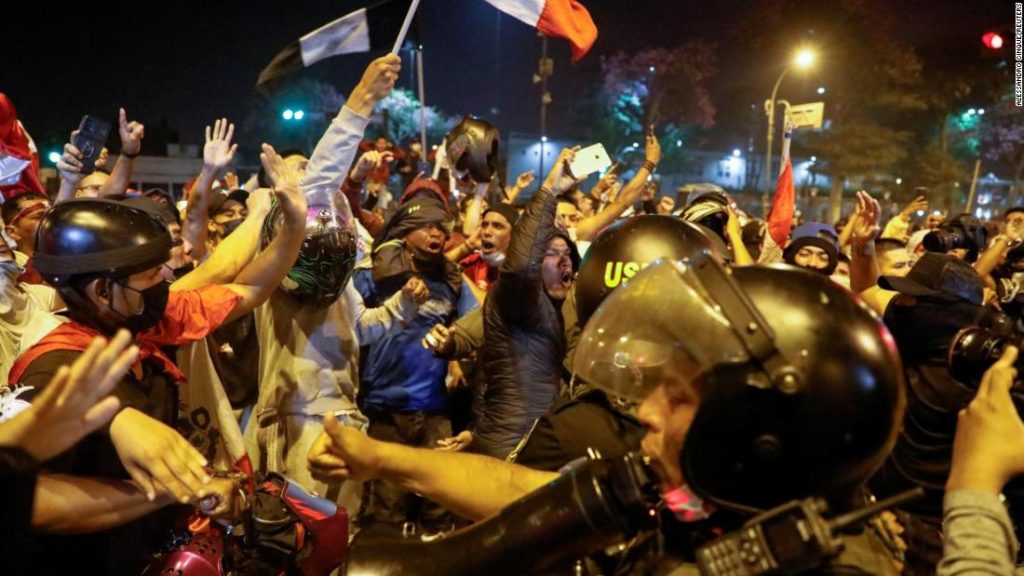The fuel price hike originally sparked the protests, which began last week, but quickly escalated into large anti-government demonstrations with rallies and road closures.
By Wednesday, at least six people were reported killed during days of protests, according to Peruvian authorities, as officials called for calm and struggled to contain the situation. Protesters are still blocking at least nine major roads in the country.
Late on Monday, President Pedro Castillo declared a state of emergency and imposed a curfew on the capital, but retracted and withdrew the curfew order on Tuesday afternoon as hundreds of protesters who ignored the measure took to the streets of Lima to demand his resignation.
A few streets away, riot police used tear gas to break up protests and protesters threw stones, injuring at least 11 people in the clashes.
Why Peru?
But while Peru has been a fertile ground for protests in recent years, this crisis has erupted as a direct result of the war in Ukraine.
The Long Consequences of Putin’s War
Russia’s invasion of Ukraine – and the consequent decision by world leaders to isolate Russia from global oil markets – sent oil prices soaring.
And for Peru, the impact was particularly severe.
Compared to other countries in the region, such as Argentina or Venezuela, Peru imports most of its oil. That has made it more vulnerable to the recent rally, hitting the economy just as it was recovering from the impact of the Covid-19 pandemic and lockdowns.
With prices rising so quickly, it wasn’t long before protests started spreading across the country. On March 28, a group of transport workers and the truckers’ union called a general strike to demand cheaper fuel.
Before becoming president, Castillo was a union leader and teacher at a small school in the rural Cajamarca region that called for better wages and working conditions.
Now his primary constituency, the urban working class on the outskirts of Lima and rural farmers across the country, are particularly hard hit by the inflationary spiral, because they pay higher prices for their food and transportation.
what happened after that?
It is difficult to predict how the situation will develop. Even before the curfew order was issued, Castillo had already made some concessions to protesters by slashing fuel taxes and increasing the minimum wage to 1,025 sola — about $280 — on Sunday. But that also failed to calm the streets.
After the curfew backfired, the president appears to be running out of options, given that Peru does not have the ability to control international oil prices. As the conflict in Ukraine continues, the current inflationary climate is expected to continue.
Any additional support to lower fuel prices would increase Peru’s debt and increase its financial hardship.
However, Peru’s situation is far from unique, and Castillo is not alone.
Other leaders face the same hard choices about how to deal with rising inflation as they try to put their finances in order after the chaos caused by Covid-19.
As the crisis deepens, Peru could find itself looking to other countries for answers.
Correction: This story has been corrected to reflect that only one president in Peru has been impeached and removed from office in the past five years.
CNN’s Claudia Ribaza, CNN’s Jimena de la Quintana in Lima, Florence Trucco’s Atlanta, and Jorge Ingels’ London contributed reports.

“Writer. Evil travel maven. Avid creator. Proud beer expert. Music lover. Explorer.”











More Stories
Jake Sullivan meets Yang Jiechi in Luxembourg, paving the way for a possible meeting between Biden and Xi
The CDC adds 3 places to its “high” risk list, including Mexico and the United Arab Emirates
Wordle 359 June 13 – Struggling with Wordle today? THREE CLUES TO HELP ANSWER | Games | entertainment